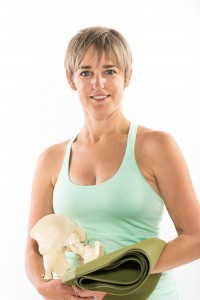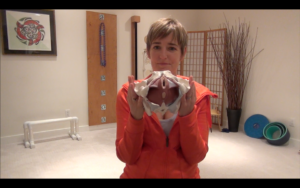By Susi Hately, BSc. Kinesiology, C-IAYT Yoga Therapist
Last weekend a friend posted on Facebook that he was headed to one of the bigger malls in Calgary “on the last Saturday before Christmas and to check back in with him to make sure he came out alive”.
If you too are feeling overwhelmed by the hoards, havoc and the sometimes chaos that can arise in these last few days, here is are two easy breathing techniques that can support you.
1. Straw Breathing
What I love about straw breathing is that it very naturally lengthens the exhale. How? Breathing through a straw requires you to lengthen your exhale. The real beauty of this exercise is you don’t have to think about trying to lengthen your exhale, which can cause mental tension and frustration – you are just breathing through a straw, and the straw does it for you.
Why it works. It is often believed that to get more breath in, the inhale needs to be deeper. In reality, if you empty your exhale completely you will often get a much fuller and more effective inhale in. This can go a long way to feeling calmer, more at ease, and more able to deal with some of the goofiness that can arise during this festive season.
How to do it:
- Sit quietly with back against a wall or in a chair. You can do this on your back too.
- If you are sitting be sure your pelvis is settled equally between the sitting bones.
- For 1 minute, breathe normally and count the number of breaths you breathe – on the exhale.
- After 1 minute, place the straw between your lips and exhale through the straw. Inhale through your nose. Continue breathing like this through the straw for 3 minutes. Exhale through the straw, inhale through your nose.
- Count your breaths again for 1 minute and notice what has changed.
Over time, you can increase the straw breathing from 3 minutes to 10-15 minutes.
Note: There are people who will find that straw breathing makes them feel claustrophobic, and more anxious. Please do not try to force your way into the exercise. Just drop the straw, and try the following.
2. Reverse The Cycle of Your Breath
Even though breathing is a continuous cycle, we often think of breathing as inhale first then exhale. This exercise shifts it up, focuses moreso on the exhale, which can bring about feelings of calm and ease.
Why it works. It comes down to perception, shifting awareness and focus. Just by changing your focal point, the feeling inside can also shift.
How to do it:
- Sit quietly. Breathe.
- After a couple of normal cycles, focus on exhale first, then inhale.
- Repeat 6-10 times. Notice what you are aware of, what you are present to.
- Continue for another 6-10 times. And again notice.
- Bring the exercise to a close. Pause for a breath or two, and continue on.
Take care of yourself this festive season.
Enjoy,
Susi


